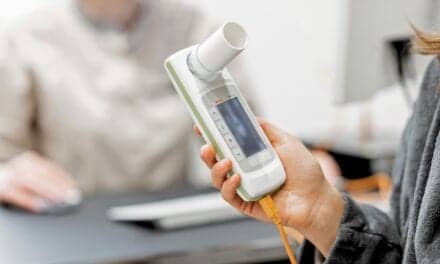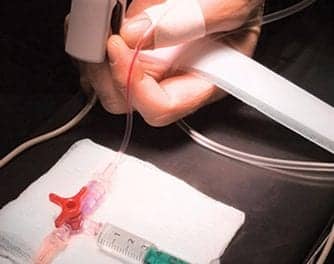A new study from the University of Maryland School of Medicine finds that increased staffing by specially trained physicians and other health care professionals, including respiratory therapists, can enhance patient survival and enable patients to breathe sooner without assistance. The first-of-its-kind study to measure the impact of the American College of Critical Care Medicine guidelines for specialist staffing levels in the intensive care unit appears in the journal Critical Care Medicine.
The researchers analyzed the files of patients in the medical intensive care unit (MICU) at the University of Maryland Medical Center (UMMC) in Baltimore 2 years before and 2 years after a move from a 10-bed MICU to a 29-bed state-of-the-art facility with larger patient rooms.
“The older MICU was already performing very well in the care of patients, and yet we found the changes with the transition to the new MICU made an even greater difference. The changes resulted in a 19% decrease in mortality in the intensive care unit and a 16% decrease in the hospital-wide mortality,” says Giora Netzer, MD, assistant professor of the medicine and epidemiology and preventive medicine at the University of Maryland School of Medicine and a pulmonologist and critical care specialist at the UMMC.
Prior to the move, the MICU was staffed 8 hours daily, 7 days a week, with physicians who specialize in intensive care and critical care medicine. The unit also had a nursing ratio of one nurse for every 1.7 patients, a ratio that is associated with better outcomes. The physician staffing level was consistent with the recommendations of the Leapfrog Group, an organization that publishes a national, public comparison of hospitals on key safety and quality issues.
After the move, UMMC’s MICU adopted an even higher level of staffing, 24-hour critical care physician coverage, as recommended by the American College of Critical Care Medicine. In addition, the number of respiratory therapists was increased to bring the pre-move ratio of one therapist for every 24 patients to the post-move ratio of one therapist for every 10 patients. Also, clinical pharmacists were assigned to evaluate patients at the bedside daily. The nursing staff remained unchanged.
In addition to greater survival rates, the changes in MICU staffing resulted in other important clinical outcomes, including substantial decreases in daily doses of sedatives for patients receiving those medications. Sedation has been shown to be a factor in prolonging ventilation, which results in more complications and a longer stay in the MICU, according to Carl Shanholtz, MD, study co-author and medical director of the MICU.
Also following the changes, the proportion of patients receiving mechanical breathing assistance for 1 or more days was smaller, while there was a significant increase in ventilator-free days among those who required a ventilator.
The researchers acknowledge that it may be difficult, however, for most hospitals to achieve the level of resources and staffing realized at the UMMC. “I think it brings into question whether we need to stratify or regionalize our hospitals into different levels of care, just as the trauma system has done,” says Netzer.
Source: University of Maryland Medical Center









